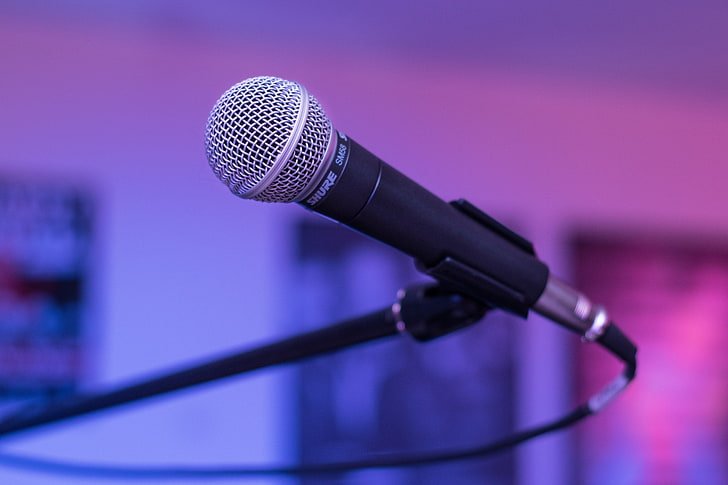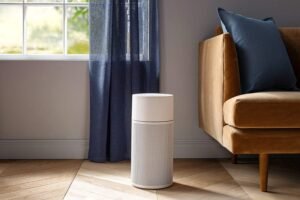
This is the review of the comparison between the two microphones from two different brands. The comparison here is between the Blue en.CORE 200 and the Shure SM58. There is around sixty dollars difference in their price range currently which brings the difference in their features and performance. To know which one is better than the other, go to the detailed review.
 |  |
| Blue en.CORE 200 | Shure SM58 |
| BUY NOW | BUY NOW |
| PROS | PROS |
| Looks attractive and has a great design. Sounds good for the price. Vocals and instruments were clear. Has internal amplifier which adds stability and gain. | Midrange recording emphasis. Internal shock mount reduces handling noise. Construction is durable. The cardioid pick-up pattern is here. |
| CONS | CONS |
| It has strong proximity. | It’s not picking up minute details as it is not super sensitive. |
SPECIFICATIONS:
| HEADER | BLUE EN.CORE 200 | SHURE SM58 |
| Brand | Blue Microphones | Shure |
| Product Line | Blue Microphones en.CORE | Shure ULX Standard Wireless System |
| Model | 200 | ULX2/58 with SM58 Cardioid Microphone |
| GENERAL | BLUE EN.CORE 200 | SHURE SM58 |
| Manufacturer | Logitech | Shure Inc. |
| Recommended Use | Professional audio | Professional audio |
| MICROPHONE | BLUE EN.CORE 200 | SHURE SM58 |
| Microphone Technology | dynamic | dynamic |
| Microphone Operation Mode | cardioid | cardioid |
| Sensitivity | 2.25 mV/Pascal | |
| Microphone Power Source Voultage (DC) | ||
| Frequency Response | 50 Hz | 50 Hz |
| Signal-To-Noise Ratio | ||
| Total Harmonic Distortion (THD) | ||
| Max Sound Pressure | 147 db | |
| Audio Input Details | Output Impedance 25 Ohm | Cardioid – 50 – 15000 Hz |
| Connectivity Technology | Wired | Wireless |
| AUDIO SYSTEM | BLUE EN.CORE 200 | SHURE SM58 |
| Type | Microphone | wireless microphone system |
| Recommended Use | Professional audio | Professional audio |
| Specific Applications | vocal | vocal |
| Additional Functions | ||
| Controls | ||
| DIMENSIONS & WEIGHT | BLUE EN.CORE 200 | SHURE SM58 |
| Diameter | 2 in | 2 in |
| Width | 3.25 in | |
| Depth | 3.25 in | |
| Height | 7.3 in | 9 in |
| Weight | 14.11 oz | 10.19 oz |
| FEATURES | BLUE EN.CORE 200 | SHURE SM58 |
| Features | Audio Analog or digital: Analog Frequency response: 50Hz to 16kHz Connectivity: XLR Pattern and type Capsule: Dynamic Polar pattern: Cardioid Type: Mounted Applications: Stage, studio. The Blue enCORE 200 is the world’s first studio-grade phantom powered active dynamic microphone. enCORE mics offer everything you’ve always wanted and never found in stage mics: lush, vibrant, and punchy studio reproduction with unprecedented clarity, detail and headroom. | Frequency response tailored for vocals, with brightened midrange and bass rolloff to control proximity effect. Effective built-in spherical wind and pop filter. Frequency response: 50 to 15,000 Hz. Pneumatic shock-mount system cuts down handling noise. Uniform cardioid pickup pattern isolates the main sound source and minimizes background noise. |
Detail Review:
INTRODUCTION:
Blue en.CORE 200
This is a dynamic microphone that actually requires phantom power. The Blue en.CORE 200 active dynamic handheld which is a vocal microphone. Active in this means that this thing requires 48 volts of phantom power to work. If you do want to pick this microphone up, it will set you back around a hundred and fifty dollars.
Shure SM58
The Shure SM58 is the successor of the Shure SM57 and these microphones are almost like twin brothers. This microphone is retailing for around ninety dollars currently on Amazon which is definitely a budget-friendly price.

DESIGN:
Blue en.CORE 200
As far as the build quality, this thing is built like an absolute tank, it has an all-metal body with a really nice amount of weight to it, the grill is incredibly strong and can probably take a pretty good beating, and there are grooves machined into the handle of this mic in case you are a super sweaty singer, and you’re prone to dropping your microphone.
Shure SM58
This mic is built to handle anything and anyone. I’ve seen these mics get dropped, ran over, dunked in water, I think that sums up, abuse tolerant, the grill gets dented, just replace the grill and it looks like new. The steel mesh grill by the way that protects the element acts as a pop filter, and a windscreen for use outdoors or for those who breathe excessively through their mouths.

FEATURES:
Blue en.CORE 200
In the box, obviously, you’re going to get the microphone, you get a shiny replacement grill in case you want to look flashy or while you’re on stage or in the studio, you get a microphone mount because you actually have 5/8 and 3/8 inch threading built into this thing, you get a carrying pouch, and you get some documentation. As far as the specs, this microphone has a cardioid polar pattern, a frequency response of 50 Hertz to 16 kilohertz, an impedance of 25 ohms, a sensitivity of approximately negative 52 decibels, a max SPL of 147 decibels, and it does require 48 volts of phantom power.
In terms of pros, the incredibly low impedance of this microphone means it’s gonna work really well with almost any cable length, any mixer, or any interface. It also has a higher output level of sensitivity in comparison to other dynamic microphones due to active electronics. It did a great job at background noise rejection, and it also did a really nice job at handling noise. It has a relatively broad presence boost from 1 to 5 kilohertz to help your voice cut through a mix as well as it cut from around 6 to 7 kilohertz to help eliminate any siblings. Then in terms of cons, the proximity effect of this thing can get overwhelming.
Shure SM58
The Shure SM58 is the fraternal twin to the Shure SM57. Like the SM57 it was originally designed as a studio microphone although these were released during the Cold War, nothing prevents artists or engineers from using the SM58 in both studios and live performances. The SM58 is the mic every performer and every audio technician handles at least once in their career usually at the beginning.
Both the SM58 and SM57 are dynamic microphones with cardioid pickup patterns but where they differ is when they’ve used for vocals especially. If you use SM57 on a vocal, you got to be careful that a person’s Vocal is not very explosive or the burst of air that comes from their mouth can actually hit that microphone and cause some distortion in the low-end. The SM58 however has an integrated pop filter, it also prevents you from getting the proximity effect or the extreme proximity effect that you get from when you use SM57.

PERFORMANCE:
Blue en.CORE 200
I think this is a pretty versatile microphone for live situations. In my opinion, on the electric and the acoustic, it just sounded fine, it wasn’t the best sounding microphone I’ve heard on those instruments. But if you’re in a band and this is the only microphone you have and you need to mic up a guitar cab or an acoustic guitar I think you’d be able to make it work with a little bit of EQ. Then on live voice, I think this is a really nice option given the presence boost, that cut to help with some of the siblings, the good amount of background noise rejection, the decent performance with handling noise, and although it wasn’t the best at rejecting plosives, it definitely wasn’t the worst by any stretch of the imagination.
Shure SM58
The SM58 is a dynamic microphone with a cardioid pickup pattern, this offers great max gain before feedback, it also gives great rejection for those off-axis sounds, those are the sounds you don’t want from behind the capsule. Its frequency range is 50 to 15k, so a little bit lower than this in SM57. Its frequency response however is tailored for vocals with a brighter mid-range and obviously more bass roll-off as compared to the SM57.

WHICH ONE IS BETTER?
In my opinion, Blue en.CORE 200 is better than the Shure SM57 and I would definitely recommend this microphone. The reason why I recommend Blue en.CORE 200 is because this is incredibly similar to the en.CORE 100. The main difference is the act of electronics which in turn leads to decreased impedance and some minor discrepancies in the frequency response where you lose out on a little bit of air compared to the 100.
Expert Reviews of Blue en.CORE 200:
By bhphotovideo.com
The black enCORE 200 Active Dynamic Handheld Vocal Microphone from Blue is an XLR-type, studio-grade phantom powered microphone that is offered with more gain before feedback—meaning you can…By pitbullaudio.com
Everything we’ve learned from years of building the world’s best studio recording microphones has gone into the en· CORE 200, a studio-grade handheld dynamic microphone designed…By microphonegeeks.com
Blue en-Core 200 is an active dynamic microphone with a cardioid pattern. It delivers a bright, high-definition sound that easily cuts through the mix. It can best be used…By mixdownmag.com
We all know what a dynamic microphone is, and should understand how it is self-powering, therefore not requiring phantom power to be supplied to it. Well, the team at Blue decided to create a dynamic…Expert Reviews of Shure SM58:
By Sound Guys
Whether you’re just starting out or you’re a recording veteran, the Shure SM58 microphone will suit your needs. The removable grille and metal construction exude quality…By musiccritic.com
The Shure SM58 is the world’s bestselling live microphone. The reason why it is so popular – and has been popular ever since it was released in 1966 – is because…By guitarfella.com
If you’ve read this review – or just heard anyone talk about Shure’s SM58 – you’ll know the reputation it has. Now you know that it deserves this reputation for a solid build and consistent…By thepodcasthost.com
In my opinion, the Shure SM58 is a great mic, for many of the reasons I’ve discussed in this review. But should you buy one? If you’re almost always going to be podcasting at you…




